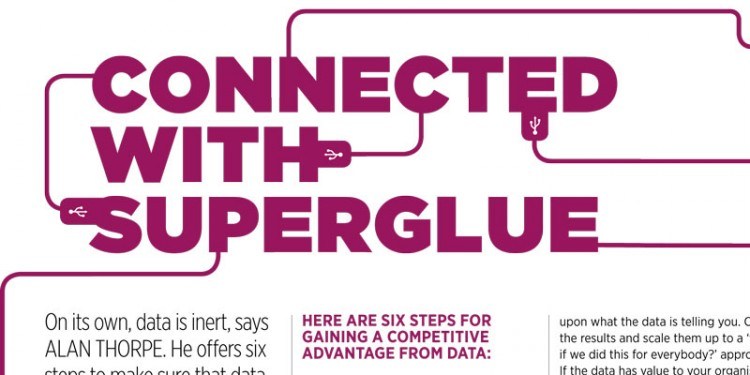It’s easy to see money leaking out of your business when investing in data on everything from databases, analytics and campaign software to build and general running costs. The question is, when does money start rolling in to justify your investment?
We’re all connected consumers. Everywhere we go we leave a trail of “digital exhaust” data when we use laptops, tablets, mobile phones or cards on the move. Throw in “traditional” data collected from the Electoral Roll, guarantee cards, surveys and marketing activities, and soon a full colour picture emerges into our lives, habits, interests, associates and movements.
The potential to understand and anticipate needs, services and solutions at the right time and place is a marketer’s dream, according to promoters of big data. Disengage and you risk messing up useful outcomes such as customer channel preferences.
On its own, data is inert. Strategic strength from data comes from having the right people and organisation in place. Mathematicians have been described as the story-tellers of the future, but even they must be partnered with people who understand the chosen market.
Here are six steps for gaining a competitive advantage from data:
- Better, not big data: collecting all data represents a potential security risk and a cost to the business. Understand which data are real triggers and drivers for your business. Identify all the current sources of data for your business and assess how complete, accessible and clean they are. Are they secure and current and are there gaps in your understanding? Are these commercially significant?
- What’s the data telling you? Ask where the potential value is. Following initial analysis, invite leaders from all areas to provide feedback on the findings. It may be the first time that leaders, siloed by product and channel, have got together around the same agenda. Data is amazing glue.
- Build a business case. Your team will have identified key opportunities and priorities that can be acted upon thanks to knowledge gained from data, services which fit individual customer’s requirements at a specific point in time. Browsing behaviour analysis means you can tailor the experience of visitors to your website. Dynamically alter the messages given out by your call centre based upon time of day or point in the customer journey. You can also ensure that customers who browse using a mobile device only see short messages.
Now run a three month proof of concept. Take a subset of your customers and adapt your treatment of them based upon what the data is telling you. Capture the results and scale them up to a “what if we did this for everybody?” approach. If the data has value to your organisation (and it will), then you’ll quickly have a basis for funding changes that deliver an initial inflow of black ink.
- Visualise what data can do for your business’s customers. “Data 1.0” failed because organisations continued to be structured around products and channels rather than customers. In this age of video and Twitter, a short film will disrupt set thinking by illustrating how data powers customer engagement with your brand – and improved your company’s results – better than a PowerPoint or written presentation.
- Understand and plan for change. Data is strategic. It’s the shared information hub around which everyone operates, and the glue that pulls an organisation together rather than apart. Understand what this means for your organisation and plan the changes to make this happen.
- Adopt a minimum viable product approach to technology. Our dynamic world requires quick results rather than three year plans. Build your technology around releasing the benefits from data identified in your business plan rather than adopting a “whizz bang” approach that drains your capital and adds complexity.
Making data a strategic strength is thrilling and it’s the future of your business. Don’t leave it to marketing, but get involved and lead.

